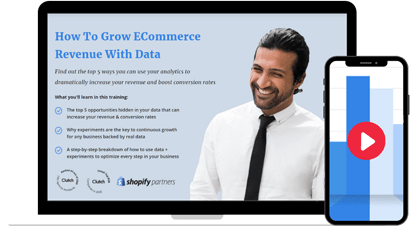a 4-minute read
Strong content is often the cornerstone of any good marketing strategy. We use it to draw people in, gather lead contact information, gain traction on social media, and so much more. It’s a highly valuable resource, providing benefits that you don’t want to miss out on. So how do we make sure that we hit the spot every time?
If you’re doing any sort of content or copywriting for your business, whether it’s a product description, a landing page, or an email, you want to make sure it meets certain guidelines and best practices for optimal user experience. After all, content is only as good as the results that it gets.
Here’s a short checklist you can use to vet your words before hitting publish.
Content Optimization Checklist and Questions
Is my headline/title effective?
- Come up with at least five options. If you lack inspiration, you can use free tools like:
- Title Generator
- Answer the public
- Blog Title Generator
- ShareThrough Headline Analyzer (for analyzing the quality of the title)
- Potent’s Content Idea Generator
- Share various headline ideas with your content team and colleagues.
- Make sure your title is search engine optimized.
Is the point of my content clear and easy to understand?
- What’s my main point?
- Did I make the topic clear in the first paragraph?
- What do I want someone to remember after reading this?
- Do my supplementary arguments and examples support my main point?
- What do I want to achieve with this article? What is the main objective?
Is my call-to-action clear?
- What do I want my reader to do, and is it clearly explained?
- Does it fit, contextually, to the content?
- Is it simple to complete?
Is my content useful, valuable, and/or entertaining to my target audience?
Remember: Even if you have an established audience, your content should have at least one of those attributes. This is how you’ll get views, comments, and people who take action through your content piece.
- Are people likely to share my comment?
- Have I included questions or stories that might encourage them to comment or engage with it?
- Will it help them solve their problems?
- Will it improve their knowledge and understanding of the topic?
Is my content free from errors?
- Did I check punctuation?
- Did I check if there are any typos?
- Did I check sentence structure?
- Does the content flow appropriately?
- Have I checked any facts, figures, or statistics that were used in my content?
- Did I make sure to credit sources of information and link out appropriately throughout my content?
- Is my title properly capitalized?
Here are some of our favorite tools that can help you with this:
- Grammarly (it will help you keep your grammar in check)
- Hemingway (it will help you keep your writing bold and clear (and get high Flesch Reading Scores)
- Capitalize My Title (it will help you properly capitalize your titles)
Did I format my text properly?
- Is my content broken into sections for easy scanning, or is it a wall of text?
- Does my content include a headline that is attractive and noticeably larger from the rest of the text, so my reader can easily decide if they want to stay on the page or not?
- Did I break up each section with a subheadline that helps the reader identify what the body text covers and the benefit of reading it?
- Did I use lists wherever possible?
- Did I use images or charts to enhance the readability and interest of my content?
- Does my content include a clear call-to-action somewhere in my content?
Did I search engine optimize my text? (mostly applicable to blog posts)
- Are my images optimized? (Fast load times are key to keeping users on your site!)
You can use free tools like Tiny Jpg or Tiny Png to compress your visuals
- Did I include appropriate internal links to other pages?
Remember: There is a reason why Google ranking is positively affected by internal linking. All of the articles you write should be aligned with your overall content strategy. They are little pieces that support your greater goal – a cornerstone article or a lead magnet that brings your users closer to taking the desired action. This is why your blogs shouldn’t be stand-alone pieces of content, but one of the players in the big game.
- Did I include appropriate external links to other sites?
Remember: External links play a big role in SEO. While we suggest avoiding the inclusion of them on your landing pages (you don’t want to lead your potential customers right in the hands of competition), including them in your articles is a must. They make you more trustworthy in the eyes of your readers, you offer them a chance to learn more about topics they’re interested in, but that you’re not covering. It will ultimately give you a chance to connect with other great minds from your industry, which will help you promote your content.
Important tip: always turn on the “Open in new tab” option. You still want to keep them on your page. They can read other articles later.
- Is my post slug written appropriately?
- Did I cross-check for SEO with my content plugin?
- Did I make it easy to comment on and share my content?
- Is my call-to-action working?
- Have I previewed my content to make sure it looks the way I want?
- Have I checked all links to make sure they actually link out?
- Have I checked my call-to-action and any other buttons/downloads to confirm they work?
Some Final Thoughts
Creating winning content doesn’t need to be an enigma. Using this checklist will make sure that everything you write, from anything as small as a tweet to something as important as a downloadable guide, ticks all the boxes on practicalities and end result.
You should always have a goal in mind, for any piece of content – even if something small, like having your audience engage with a blog post. That way, you’ll be able to answer the above questions easily. If any part of your content doesn’t answer one of the questions as you’d like it to, adapt it, change things up, and then ask the questions again. Keep refining your content until it ticks every box.
If you ever need a helping hand in making your content strategy work for you, we are always ready to assist.
Get in touch with us today and we can set up a consultation call.



